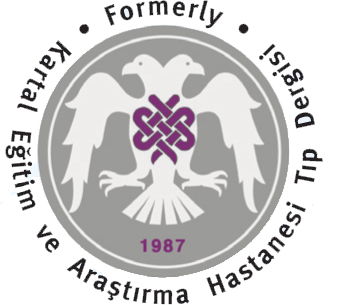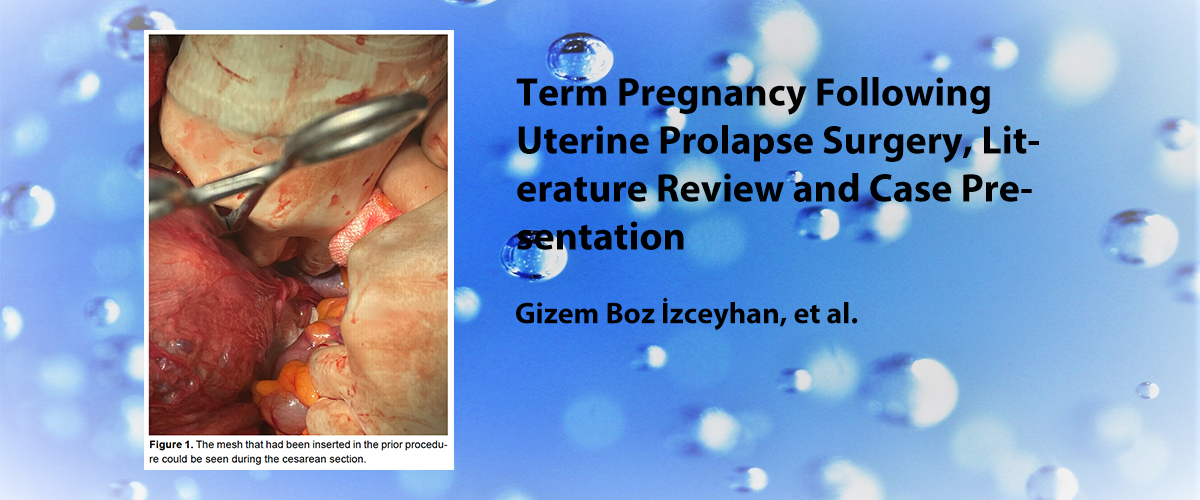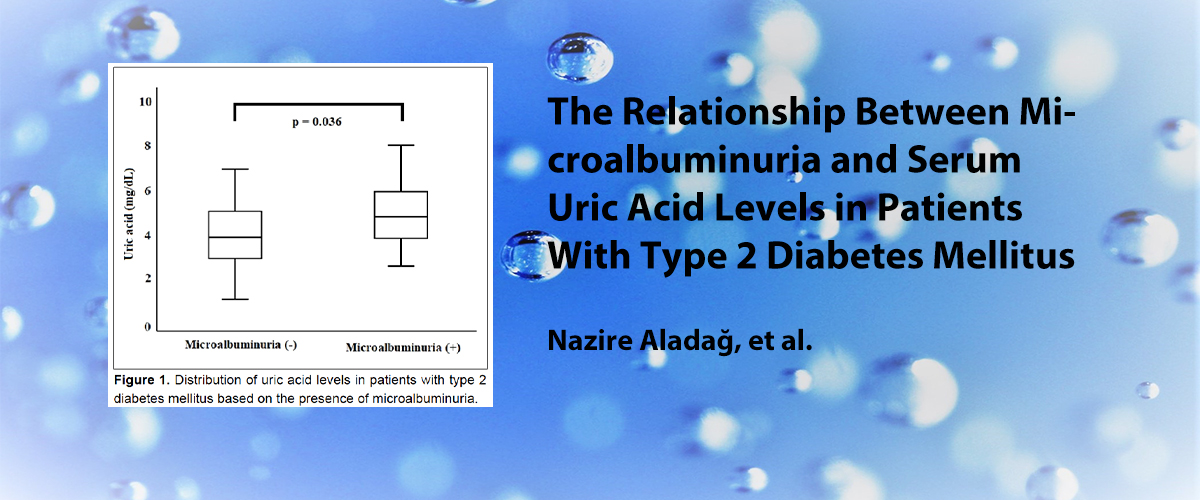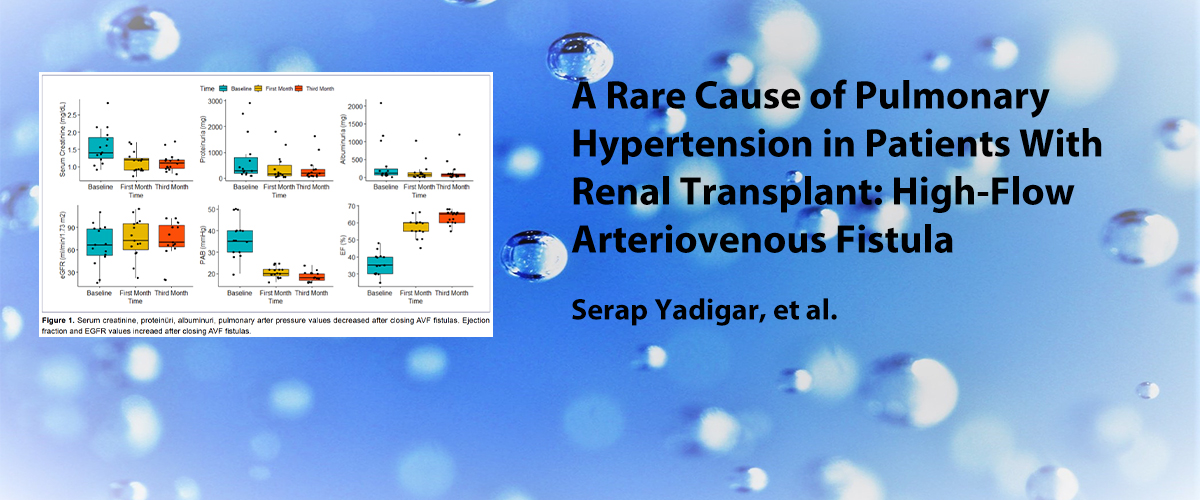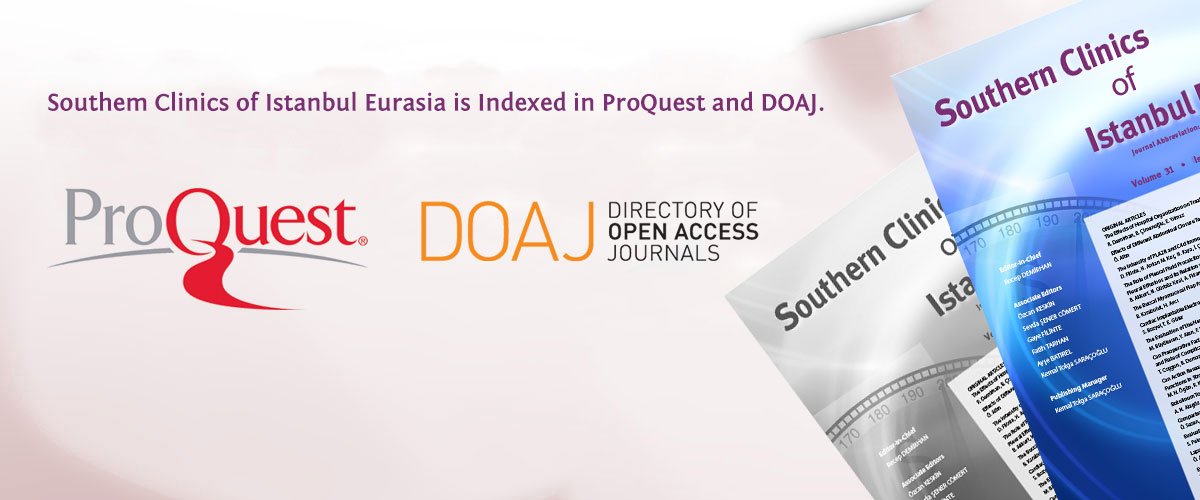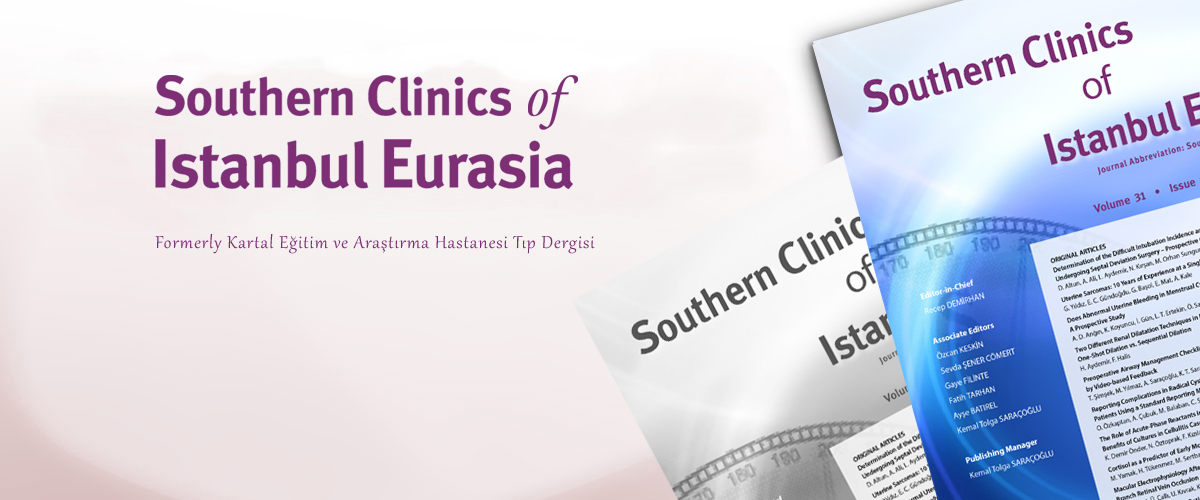E-ISSN : 2587-1404
ISSN : 2587-0998
ISSN : 2587-0998
Cilt: 20 Sayı: 1 - 2009
| ARAŞTIRMA MAKALESI | |
| 1. | Serviks kanseri ve prekanseröz lezyonlarında PCR ile HPV tiplemesi HPV typing with PCR in cervical cancerous and precancerous lesions Dilek Yavuzer, Nimet Karadayı, Aykut Erdağı, Taflan Salepçi, Hüseyin Baloğlu, Reşat DabakSayfalar 1 - 6 AMAÇ: Günümüzde serviks neoplazilerinde human papillomavirusun (HPV) rolü kesin olarak kanıtlanmış olmakla birlikte, ülkemizde serviks lezyonlarındaki HPV prevalansı hakkında bilgilerimiz sınırlıdır. Bu çalışmada, serviks kanseri ve prekanseröz lezyonu olan kadınlarda HPV prevalansı ve HPV tipleri araştırıldı. YÖNTEMLER: İnvaziv serviks kanseri ve servikal intraepitelyal neoplazi (CIN) tanısı almış 50 adet servikal doku örneği nested MY/GP polymerase chain reaction (PCR) ile HPV DNA varlığını araştırmak için tarandı. BULGULAR: Servikal doku örneklerinin 22si invaziv serviks karsinomu, 12si CIN 3, 7si CIN 2 ve 9u ise CIN 1 idi. Elli olgunun 35 tanesinde (%70) HPV DNA tespit edildi. Tipleme yapıldığında, en sık rastlanan 3 HPV tipi sırasıyla, HPV 6/11 (%42,9), HPV 16 (%22,9) ve HPV 18 (%14,3) olarak bulundu. İki tip birden içeren HPV enfeksiyonu ise 7 olguda (%20) saptandı. SONUÇ: Çalışma grubumuzdaki HPV prevalansı ve HPV tiplerinin dağılımı literatürde bildirilenlere göre farklıydı. Bu durum HPV görülme sıklığının ve HPV tiplerinin dağılımının coğrafi farklılıklar göstermesi ile ilişkili olabilir. Ayrıca olgu sayımız sınırlı olduğundan, ülkemizdeki HPV prevalansı ve HPV tiplerinin dağılımını daha doğru olarak belirlemede geniş serilerle yapılan çalışmalara ihtiyaç vardır. OBJECTIVE: The role of human papillomavirus (HPV) in the etiology of cervical neoplasia is now well established, however in our country, the knowledge of HPV prevalence in cervical lesions is still limited. The aim of this study was to investigate the prevalence of HPV DNA and to determine HPV types distrubution among women with cervical cancerous and precancerous lesions. METHODS: Fifty cervical tissues with invasive cervical carcinoma and cervical intraepithelial neoplasia (CIN) were screened by nested MY/GP polymerase chain reaction (PCR) for HPV DNA. RESULTS: Twenty-two samples were invasive cervical carcinoma, 12 were CIN 3, 7 were CIN 2 and 9 were CIN 1 lesions. Thirty-five out of 50 (70%) cervical tissues were positive for the HPV DNA. When typing was performed, the three most common HPV types were HPV 6/11 (42.9%), HPV 16 (22.9%) and HPV18 (14.3%), respectively. Dual HPV infections were found in 7 (20%) cases. CONCLUSION: HPV prevalence and type distrubition in our study population were different to that reported worldwide. This might be related to the geographic differences of prevalence and distrubition of HPV types around the world. However, as the number of study population was limited, the further and larger studies are needed to determine more reliable HPV prevalence and distrubition of HPV types in Turkish women. |
| 2. | Gastrointestinal stromal tümörler ile malign epitelyal tümörlerin birlikteliği Coexistence of gastrointestinal stromal tumors and malign epithelial tumors Dilek Yavuzer, Dilek Şakirahmet, Reşat Dabak, Aykut Erdağı, Nimet KaradayıSayfalar 7 - 12 AMAÇ: Gastrointestinal stromal tümörler (GİST) sindirim sisteminin en sık görülen mezenkimal tümörleri olup tüm gastrointestinal tümörlerin yaklaşık %3ünü oluştururlar. Çalışmamızın amacı, GİSTlerin sindirim sisteminin malign epitelyal tümörleri ile birlikte görülme sıklığını araştırmak, birliktelik izlenen olgularda tümörlerin lokalizasyonları, histopatolojik ve immünohistokimyasal özelliklerini saptamak ve sadece GİST saptanan olgularla karşılaştırmaktır. YÖNTEMLER: Hastanemizin patoloji kliniğinde tanı alan 22 GİST olgusu çalışmaya dahil edildi. Bunlar arasından malign epitelyal tümör ile birliktelik gösterenler seçilerek ayrı bir grup oluşturuldu. Bu gruptaki malign epitelyal tümörlerde immünohistokimyasal olarak CD117 ve CD34 ekspresyonu araştırıldı. BULGULAR: Yirmi iki olgunun 5inde (%22,7) GİST ile birlikte adenokarsinom saptandı. Bu olgularda GİSTlerin 3ü mide, 2si ise ince bağırsak yerleşimli idi. Bu gruptaki GİSTler agresif davranış açısından düşük ya da çok düşük risk grubundaydı. GİSTlerle birlikte görülen adenokarsinomlar ise genellikle mide yerleşimli olup üç tanesi taşlı yüzük hücreli karsinomdu. Adenokarsinomlarda CD34 ve CD117 ile immünohistokimyasal olarak boyanma saptanmadı. SONUÇ: GİSTlerin sindirim sisteminin malign epitelyal tümörleri ile birlikteliği rastlantısal mı, yoksa farklı histopatolojik yapıya sahip bu tümörler gelişimleri sırasında ortak bir mekanizmayı kullanıyor olabilirler mi sorusunu cevaplamak için geniş serilerle yapılan çalışmalara ihtiyaç vardır. OBJECTIVE: Gastrointestinal stromal tumors (GIST) are the most common mesenchymal tumors of the digestive system and they represent approximately 3% of all the gastrointestinal tumors. The aim of our study was to investigate the frequency of GIST concomitant with other malign epithelial tumors of the digestive system, to determine the localization, histopathologic and immunohistochemical features of the tumors in concomitant cases and compare with the cases that include only GIST. METHODS: Twenty-two cases of GIST diagnosed in the pathology department of our hospital are included in the study. From these cases, the GISTs concomitant with malign epithelial tumors were separated to form a different group. Immunohistochemically CD117 and CD34 expression were investigated in malign epithelial tumors in this group. RESULTS: Adenocarcinoma was found in 5 of the 22 cases (22.7%) concomitant with GIST. In these cases 3 of the GISTs were localised in the stomach, while 2 in the small bowel. GIST of this group belonged to low or very low risk group regarding aggressive behaviour. Adenocarcinoma seen with GIST were generally localized in the stomach and 3 of them were signet ring cell carcinoma. Immunohistochemical staining with CD34 and CD117 were not found in adenocarcinomas. CONCLUSION: There is a need of studies with large series in order to find an answer to the question of whether the synchronous occurence of GIST and malign epithelial tumors of the digestive system is coincidental or whether they have a common origin and carcinogenetic mechanisms. |
| 3. | Sıçanlarda oluşturulan deneysel mekanik ikter modelinde ursodeoksikolik asit ve glutaminin bakteriyel translokasyon, karaciğer fonksiyon testleri ve karaciğer histopatolojisine olan etkileri The effects of ursodeoxycholic acid and glutamine on bacterial translocation, liver functions and hepatic histopathology in rats with obstructive jaundice Nejdet Bildik, Ayhan Çevik, Burak Kadıoğlu, Hüseyin Ekinci, Mehmet Altıntaş, Gülay Dalkılıç, Aylin Gül, Mustafa GülmenSayfalar 13 - 21 AMAÇ: Bu çalışmada, obstrüktif sarılık oluşturulan hayvan modellerinde ursodeoksikolik asit ve glutaminin bakteriyel translokasyon, karaciğer histopatolojisi ve karaciğer fonksiyon testlerine olan etkilerinin araştırılması amaçlandı. YÖNTEMLER: Deney hayvanı olarak ağırlıkları 200-280 gr arasında değişen, Wistar Albino cinsi 60 adet dişi sıçan üzerinde çalışıldı. Her grupta 20 adet hayvan içeren üç grup oluşturuldu. Deney grubundaki hayvanlarda cerrahi işlem sonrası 3 gün içinde ikter gelişti. Dördüncü gün sıçanların diyetine 10 mg/kg/gün ursodeoksikolik asit (Ursofalk®) ve 4 ml/kg/gün L-alanil L-glutamin içeren solüsyon (Dipeptiven®) eklendi. Tüm sıçanlardan bakteriyel translokasyonu belirlemek üzere mezenter, çekum ve kan örnekleri alındı. Biyokimyasal parametreler için kan örneği alındı. Histopatolojik inceleme için karaciğerden örnekler alındı. BULGULAR: Mekanik ikter oluşturduğumuz sıçanlarda AST, ALT, GGT, ALP, total bilirubin ve direkt bilirubin seviyelerinde artış olduğu belirlendi. Sıçanlarda hafif derecede yağlanma saptanırken ursodeoksikolik asit ve glutamin kullanılan gruptakilerde bu oranın azaldığı saptandı ve total bilirubin düzeyleri arasında fark saptanmadı. SONUÇ: Sonuç olarak, mekanik ikterli hastalarda bakteriyel translokasyon ve karaciğerdeki hasarlanmada ursodeoksikolik asit ve glutaminin operasyon öncesi ve sonrası verilmesinin mekanik ikterli hastalardaki morbidite ve mortalite üzerinde önemli ölçüde olumlu etkileri olduğunu savunmaktayız. OBJECTIVE: In this study, our aim was to investigate the effects of ursodeoxycholic acid and glutamine on bacterial translocation, hepatic histopathology and liver function tests in animal models with obstructive jaundice. METHODS: Sixty female Wistar Albino rats weighing 200-280 g were used. Twenty rats were assigned to each of three groups. The experiment group developed icterus on the 3rd postoperative day, and 10 mg/kg/day ursodeoxycholic acid (Ursofalk®) and 4 ml/kg/day L-alanyl L-glutamine solution (Dipeptiven®) were added to their diet with orogastric intubation on the 4th postoperative day. Investigated parameters were AST, ALT, ALP, GGT, total (T) bilirubin, and direct (D) bilirubin. Mesenteric, cecum and blood samples were collected in order to determine bacterial translocation. For measurement of biochemical parameters, blood sample was obtained. For histological investigation, samples of liver tissue were obtained. RESULTS: Our study demonstrated elevated levels of AST, ALT, GGT, ALP, and T and D bilirubin in rats with mechanical icterus. While the ursodeoxycholic acid and glutamine-administered group exhibited a significant decline in AST, ALT, GGT, ALP, and D bilirubin levels, there was no difference regarding T bilirubin levels. CONCLUSION: We concluded that in the case of bacterial translocation and liver damage, preoperative and postoperative ursodeoxycholic acid and glutamine administration in patients with mechanical icterus may have positive effects on morbidity and mortality. |
| 4. | Kapalı tibia kırıklarında intramedüller çivileme ve İlizarov eksternal fiksatörü uygulamalarının sonuçları The results of intramedullary nailing and Ilizarov external fixator applications in closed tibial fractures Cem Çopuroğlu, Mert Özcan, Osman Uğur ÇalpurSayfalar 22 - 28 AMAÇ: Bu çalışmada, intramedüller (İM) çivileme ve İlizarov eksternal fiksasyon (EF) yöntemi ile tedavi edilen kapalı tibia kırıklı hastaların, fonksiyonel ve radyolojik sonuçlarının karşılaştırılması amaçlandı. YÖNTEMLER: Çalışmada kapalı tibia şaft kırığı nedeni ile cerrahi tedavi uygulanan 26 hasta (19 erkek, 7 kadın; ortalama yaş 39,5; dağılım 17-70) geriye dönük olarak değerlendirildi. İM çivileme uygulanan 14 (%53,8) hasta ile İlizarov EF uygulanan 12 (%46,2) hastanın takip sonuçları radyolojik ve fonksiyonel açıdan karşılaştırıldı. BULGULAR: Ortalama takip süresi 27,3 ay idi. Ortalama kaynama süresi 14 hafta (İM çivi 12,8 hafta, EF 15,3 hafta) idi. Diz hareket kısıtlılığı iki grupta da görülmedi. Ayak bileği hareketleri, iki grupta da sağlam tarafa göre azalmış olarak bulundu. Johner Wruhs kriterlerine göre 5 çok iyi (4 İM, 1 EF), 7 iyi (5 İM, 2 EF), 9 orta (2 İM, 7 EF) ve 5 (3 İM, 2 EF) kötü sonuç elde edildi. SONUÇ: Kapalı tibia şaft kırıklı hastaların tedavi sonrası radyolojik ve fonksiyonel açıdan karşılaştırılmalarında, İM çivileme İlizarov EFye göre daha iyi sonuçlar vermektedir. OBJECTIVE: In this study, we aimed to compare functional and radiological results of tibial diaphysis-fractured patients who were treated with intramedullary (IM) nailing or Ilizarov external fixation (EF) technique. METHODS: Twenty-six (19 male, 7 female; mean age 39.5 years; range 17 to 70 years) tibial diaphysis-fractured patients who had been treated surgically were evaluated. Follow-up results of 14 (53.8%) patients with IM nailing and 12 (46.2%) patients with Ilizarov EF were compared radiologically and functionally. RESULTS: The mean follow-up was 27.3 months (range 4 to 48 months). The average union time was 14 weeks (IM nailing 12.8 weeks, EF 15.3 weeks). No limitation in knee motion was observed. In both groups, when compared with the unoperated side, ankle motion was decreased. According to Johner and Wruhs criteria, 5 excellent (4 IM, 1 EF), 7 good (5 IM, 2 EF), 9 poor (2 IM, 7 EF) and 5 bad (3 IM, 2 EF) outcomes were determined. CONCLUSION: When we compared the treatment of closed tibia diaphysis fractures radiologically and functionally, IM nailing gives better results than Ilizarov EF. |
| 5. | Tiroid hastalıklarında postoperatif histopatolojik inceleme ile preoperatif testler arasındaki ilişki The relationship between postoperative histopathologic examination and preoperative diagnostic methods in thyroid diseases Nejdet Bildik, Mehmet Mustafa Altıntaş, Erdoğan Aslan, Ayhan Çevik, Hüseyin Ekinci, Gülay Dalkılıç, Hande AltıntaşSayfalar 29 - 36 AMAÇ: Tiroid hastalıklarında başlıca tanı yöntemleri tiroid ultrasonografisi (USG), tiroid sintigrafisi ve ince iğne aspirasyon biyopsisidir (İİAB). Biz bu çalışmada, kliniğimizde tiroid hastalıkları nedeniyle ameliyat ettiğimiz hastaların preoperatif tanı yöntemleri sonuçlarını, postoperatif histopatolojik inceleme sonuçları ile karşılaştırarak, preoperatif tanı yöntemlerinin etkinliğini kendi klinik deneyimlerimiz olarak sunmayı amaçladık. YÖNTEMLER: Kliniğimizde 2006 - 2007 yılları arasında ameliyat edilen 125 hasta retrospektif olarak incelendi. Hastaların yaş, cinsiyet, preoperatif USG, sintigrafi, İİAB bulguları ile postoperatif histopatolojik inceleme sonuçları karşılaştırıldı. BULGULAR: İİAB hastaların büyük kısmında (%88,8) benign iken, malign sitoloji oranımız %11,2 bulunmuştur. Ameliyat edilen hastalarda postoperatif histopatoloji sonuçları büyük oranda benign gelmiştir (%88, n=110). Malign patoloji oranımız %12 bulunmuştur. SONUÇ: Preoperatif İİAB sonucu ile postoperatif histopatoloji sonucu arasında istatistiki olarak çok kuvvetli bir ilişki olduğu görülmüş olup, preoperatif dönemde hastaların büyük kısmında İİABnin yeterli bir tanı yöntemi olacağı kanaatindeyiz. OBJECTIVE: The main diagnostic methods in thyroid diseases are thyroid ultrasound (US), thyroid scintigraphy and fine needle aspiration biopsy (FNAB). We aimed in this study to compare results of preoperative diagnostic methods and postoperative histopathologic examinations regarding the effectiveness of preoperative methods in patients operated for thyroid disease, based on our clinical experience. METHODS: One hundred twenty-five patients who were operated in our clinic between 2006 and 2007 were retrospectively reviewed. Data collected for each patient included: age, gender and preoperative US, scintigraphy, and FNAB findings. Preoperative findings were compared with postoperative histopathologic examination results. RESULTS: FNAB was benign in the majority of patients (88.8%), while our rate of malignant cytology was 11.2%. Postoperative histopathology results were largely benign (88% n=110), while the malignant pathology rate was 12% in patients who were operated. CONCLUSION: A statistically significant relationship was determined between preoperative FNAB and postoperative histopathology results. Thus, we believe that FNAB would be a sufficient diagnostic method in the majority of patients in the preoperative period. |
| OLGU SUNUMU | |
| 6. | Romatoid artrit zemininde multifaktöriyel serebrovasküler hastalık olgusu A case of multifactorial cerebrovascular disease complicated with rheumatoid arthritis Ülgen Kökeş, Fazilet Hız, Burcu ErtugrulSayfalar 37 - 41 Büyük ve küçük arter tutulumunun birlikteliği ve kardiyoembolizmin bulunmadığı iskemik inme olgularında, etyolojik nedenler vaskülit, hematolojik bozukluk, koagülopati, nadir görülen hastalıklar ya da idiyopatik olabilmektedir. Romatoid artrit, konnektif doku hastalıkları içerisinde en sık vaskülit nedenidir. Kırk yedi yaşındaki kadın hasta, akut gelişen, iskemik çoklu büyük ve küçük serebral arter tutulumuyla değerlendirildi. Etyolojiye yönelik yaklaşım, olgumuzda olduğu gibi, kollajen doku hastalığının varlığında, tanı karışıklığı yaratmaktadır. Bazen, multipl skleroz, miyasteni, parkisonizm tanısı almaktadır. Bu olgu, kollajen doku hastalığında, tedavi ve prognoz açısından, etyolojik değerlendirmenin önemini vurgulamak için sunuldu. The etiology of ischemic stroke without large and small artery damage or cardioembolism is vasculitis, hematologic dysfunction, coagulopathy, rarely seen diseases, or idiopathic. Rheumatoid arthritis within connective tissue diseases is the most common cause of vasculitis. A 47-year-old female had acutely presented with ischemic multiple small and large cerebral artery involvement. Investigation of etiology might confuse the diagnosis in the presence of collagenous tissue disease. Patients are sometimes diagnosed as multiple sclerosis, myasthenia gravis or parkinsonism. This case is important to emphasize etiologic research for the treatment and prognosis variabilities in collagenous tissue disease. |
| 7. | Metformin intoksikasyonuna bağlı gelişen nadir bir tablo: Ağır laktik asidoz ve ani kardiyak arrest A rare outcome induced by metformin intoxication: Severe lactic acidosis and sudden cardiac arrest Gökhan Perincek, Ebru Çakır Edis, Sibel Güldiken, Mehmet Şevki UyanıkSayfalar 42 - 44 Elli beş yaşında erkek hasta tip 2 diyabetes mellitus nedeniyle oral antidiyabetik kullanmakta iken, intihar amacıyla 60 adet metformin HCL içtiği öğrenildi. Genel durum orta, bilinç açık olan hastanın tetkiklerinde pH: 7,29, PaCO2: 39, PaO2: 44 ve laktat: 23,4 olarak saptandı. Hastaya 5 ampul NaHCO3 puşe yapıldı ve NaHCO3 infüzyonu başlandı. Tansiyonu düşük seyretmesi nedeniyle tedaviye dopamin infüzyonu eklendi. Yapılan tedaviye rağmen laktik asidozu artan, genel durumu kötüleşen hasta entübe edildi. Derinleşen laktik asidoz nedeniyle hemofiltrasyon uygulanması planlandı. Hastanın tansiyonunun tedaviye rağmen düşük seyretmesi nedeniyle hemofiltrasyona başlanamadı. Laktik asidozu derinleşen hasta kardiyak arrest sonrası hayatını kaybetti. A 55-year-old male patient taking oral antidiabetics due to type 2 diabetes mellitus took 60 metformin HCL in a suicide attempt. The patient was conscious and the tests revealed pH: 7.29, PaCO2: 39, PaO2: 44, and lactate: 23.4. The patient was given 5 ampoules of NaHCO3 and NaHCO3 infusion was started. Dopamine infusion was added to the therapy due to hypotension. Lactic acidosis increased nevertheless, and the patients condition worsened, so intubation was performed. Hemodiafiltration due to increasing lactic acidosis was planned, but was not possible because of continuing hypotension. The patient died after cardiac arrest. |
| 8. | Alt konkadan kaynaklanmış vasküler leiomyom Vascular leimyoma originated from the inferior turbinate Belit Merve Şener, Cenk Evren, Nevzat Demirbilek, Ahmet KaurSayfalar 45 - 49 Özelikle tek taraflı burun kanaması yaşlı hastalarda sık karşılaşılan bir problemdir. Hipertansiyon gibi sistemik sebeplerden olabileceği gibi burun içi kitlelerden de kaynaklanabilir. Leiomiyomlar damar düz kaslarından orijin aldığı düşünülen iyi huylu tümörlerdir. Baş ve boyunda çok ender bulunurlar. Tedavisinde basit cerrahi eksizyonun kür oranları yüksektir. Sol taraftan burun kanaması şikâyeti olan 58 yaşındaki erkek hastamızda endoskopiyle ameliyat edildikten bir yıl sonra nüks gözükmedi. Bu çalışmada, nazal kavitede oluşan leiomiyomu klinik ve histolojik özellikleriyle beraber literatür bilgilerini de gözden geçirerek tartıştık. Nose bleeding, particularly one-sided, is a common problem in elderly patients. It may be due to hypertension as well as the masses inside the nose. Leiomyomas are benign neoplasms that are thought to originate from the vascular smooth muscle. They are very rarely found in the head and neck area. Simple surgical excision yields high cure rates. A 58-year-old male presented with left-sided epistaxis. There has been no recurrence one year after the endoscopic excision of the nasal leiomyoma. In this paper, we present the clinical and histological features of a patient with leiomyomas of the nasal cavity together with a review of the literature. |
| 9. | Prostatın karsinosarkomu (Sarkomatoid karsinom): İki olgu sunumu Prostatic carcinosarcoma (Sarcomatoid carcinoma): Report of two cases Elife Kımıloğlu Şahan, Ayşenur Akyıldız İğdem, Tayfun Budak, Nusret ErdoğanSayfalar 50 - 53 Prostatın sarkomatoid karsinomu (karsinosarkom) malign epitelyal ve sarkomatoid komponentler içeren nadir bir prostatik neoplazidir. Bu tümörlerde epitelyal komponent genellikle yüksek gradlı adenokarsinomdur. Sarkomatoid komponent iğsi şekilli hücrelerden oluşur, buna rağmen osteosarkom, kondrosarkom ve anjiyosarkom benzeri heterolog elemanlar içerebilir. Bu yazıda, 65 ve 71 yaşlarında prostat spesifik antijen (PSA) değerleri sırası ile 1,5 ve 5,6 olan iki olgu sunuldu. Her iki olgu da epitelyal ve sarkomatoid komponentler içeren malign prostat tümörüne sahipti. İmmünohistokimyasal olarak karsinomatöz komponentte pansitokeratin, sarkomatoid komponentte vimentin pozitivitesi izlendi. Bugüne kadar literatürde bildirilmiş az sayıda prostatik karsinosarkom olgusu mevcuttur. Bu tümörleri daha detaylı tanımlayabilmek amacı ile prostatik karsinosarkomlu iki olguyu klinik bilgi ve patolojik bulguları ile beraber değerlendirdik. Sarcomatoid carcinoma (carcinosarcoma) of the prostate is a rare type of prostatic neoplasm that demonstrates a combination of malignant epithelial and sarcomatoid components. The epithelial component of these tumors is often a high-grade adenocarcinoma. The sarcomatoid component often demonstrates a spindled appearance, although heterologous elements resembling osteosarcoma, chondrosarcoma and angiosarcoma may be present in a subset of cases. We present two cases (65- and 70-year-old males) whose prostate-specific antigen (PSA) levels were 1.5 and 5.6, respectively. Both cases had malignant tumors of the prostate, which contained both epithelial and sarcomatoid components. Immunohistochemically, pancytokeratin was positive in the carcinomatous component and vimentin was positive in the sarcomatoid component. To date, only a small number of prostatic carcinosarcomas have been reported in the literature. To further characterize these tumors, we examined clinical information and pathologic findings in two patients with sarcomatoid carcinomas of the prostate. |
| 10. | İzole fleksör pollisis longus kası tutulumu ile giden anterior interosseöz sinir palsi: Bir olgu sunumu Isolated flexor pollicis longus muscle paralysis with anterior interosseous nerve palsy: A case report Muhsin Dursun, Serhat Gafur Karaca, Haldun Orhun, Volkan Gürkan, Ender Sarıoğlu, Güray AltunSayfalar 54 - 56 Sol kolunun üzerinde yattıktan sonra kolunda ağrı ile uyanan ve sadece fleksör pollisis longus kasında kuvvet kaybı gelişen 28 yaşında erkek hasta kliniğimize sol el 1. parmak interfalangial eklemini fleksiyona getirememe şikayeti ile başvurdu.Hastanın yapılan elektromyografi tetkikinde anterior interosseöz sinir tuzak nöropatisi tespit edildi. Hastaya antienflamatuar tedavi ile beraber eklem hareket açıklığını korucuyu rehabilitasyona başlandı. Altı hafta sonunda tam iyileşme sağlanan hastada bir yıllık takip neticesinde nüks saptanmadı. In this report, a 28 year-old male patient with acutely developing muscle weakness in the flexor pollucis longus is described. The patient presented with inability to flex his left interphalangeal joint. Electromyelographic studies showed anterior interosseous nerve entrapment neuropathy, and antiinflammatory drug therapy was initiated. Complete remission was achieved at the end of six weeks and no recurrence was observed during the one year follow-up. |

